
Discover the Best Blooming Succulents for Ground Covers

When it comes to landscaping and gardening, finding the right ground cover plants is essential. Ground covers not only add beauty and visual interest to your outdoor space, but they also help prevent soil erosion and suppress weeds. While there are many options to choose from, one popular and versatile choice is blooming succulents. Succulents are known for their ability to store water in their leaves, making them low-maintenance and drought-tolerant. In addition to their unique and attractive foliage, many succulent species also produce stunning blooms, adding an extra layer of color and charm to your garden.
We will explore some of the best blooming succulents for ground covers. We will discuss different types of succulents that are known for their vibrant flowers, such as the Sedum spurium 'Dragon's Blood' and the Delosperma cooperi. We will also provide tips on how to choose the right succulent ground cover for your specific garden conditions and how to care for them to ensure optimal growth and blooming. Whether you're looking to add some color to a rocky landscape, fill in gaps between stones, or create a low-maintenance flowerbed, these blooming succulents are sure to be a beautiful and practical addition to your outdoor space.
- Sedum spurium 'Dragon's Blood' is a great choice for a ground cover succulent
- Sedum reflexum 'Angelina' is a low-growing succulent that spreads quickly, making it perfect for ground cover
- Delosperma cooperi, also known as the ice plant, is a beautiful succulent ground cover with vibrant pink flowers
- Aptenia cordifolia, commonly known as baby sun rose, is a fast-growing succulent that forms a dense ground cover
- Sempervivum tectorum, or hens and chicks, is a popular succulent ground cover that forms rosettes of leaves
- Lampranthus spectabilis, or trailing ice plant, is a cascading succulent ground cover with bright purple flowers
- Drosanthemum floribundum, or rosea ice plant, is a low-growing succulent with pink flowers that makes an excellent ground cover
- Echeveria elegans, or Mexican snowball, is a compact succulent that forms a dense ground cover with its rosettes of pale green leaves
- Portulaca grandiflora, or moss rose, is a colorful succulent ground cover that thrives in hot, dry conditions
- Orostachys iwarenge, or dunce's caps, is a unique succulent ground cover that forms clumps of rosettes resembling miniature pine cones
- Sedum spurium 'Dragon's Blood' is a great choice for a ground cover succulent because of its vibrant red foliage and ability to tolerate various soil conditions
- Sedum reflexum 'Angelina' is a low-growing succulent that spreads quickly, making it perfect for ground cover in sunny areas
- Delosperma cooperi, also known as the ice plant, is a beautiful succulent ground cover with vibrant pink flowers that bloom in the summer
- Aptenia cordifolia, commonly known as baby sun rose, is a fast-growing succulent that forms a dense ground cover and produces small pink or purple flowers
- Sempervivum tectorum, or hens and chicks, is a popular succulent ground cover that forms rosettes of leaves and can tolerate harsh conditions
- Lampranthus spectabilis, or trailing ice plant, is a cascading succulent ground cover with bright purple flowers that blooms in the spring
- Drosanthemum floribundum, or rosea ice plant, is a low-growing succulent with pink flowers that makes an excellent ground cover for dry, sunny areas
- Drosanthemum floribundum, or rosea ice plant
- Echeveria elegans, or Mexican snowball, is a compact succulent that forms a dense ground cover with its rosettes of pale green leaves and can tolerate some shade
- Portulaca grandiflora, or moss rose, is a colorful succulent ground cover that thrives in hot, dry conditions and produces vibrant flowers in various colors
- Orostachys iwarenge, or dunce's caps, is a unique succulent ground cover that forms clumps of rosettes resembling miniature pine cones and is drought-tolerant
- Frequently Asked Questions
Sedum spurium 'Dragon's Blood' is a great choice for a ground cover succulent
Sedum spurium 'Dragon's Blood' is a popular and versatile ground cover succulent that is sure to add a touch of beauty to your garden. With its striking deep red foliage and small star-shaped flowers, this sedum variety is a showstopper.
This succulent is well-suited for ground cover due to its low-growing, spreading habit. It forms a dense mat of foliage, providing excellent coverage for bare areas in your garden. Whether used to fill in gaps between stepping stones or to create a vibrant carpet of color, 'Dragon's Blood' is a reliable choice.
One of the advantages of this sedum variety is its ability to thrive in various growing conditions. It can tolerate both full sun and partial shade, making it a versatile option for different areas of your garden. Additionally, it is drought-tolerant and requires minimal watering, making it a low-maintenance ground cover choice.
In terms of care, 'Dragon's Blood' is a hardy succulent that can withstand colder temperatures, making it suitable for a wide range of climates. It is also deer-resistant, which is a bonus for those dealing with wildlife in their garden.
 Discover the Stunning Succulents with Towering Blossoms
Discover the Stunning Succulents with Towering BlossomsTo propagate this sedum, you can simply take stem cuttings and place them in well-draining soil. With proper care, they will root and start to grow, allowing you to expand your ground cover area or share this beautiful succulent with friends and family.
If you are looking for a stunning ground cover succulent that can thrive in various conditions and requires little maintenance, Sedum spurium 'Dragon's Blood' is an excellent choice. Its vibrant red foliage, ability to withstand different climates, and low-growing habit make it a standout option for adding beauty and functionality to your garden.
Sedum reflexum 'Angelina' is a low-growing succulent that spreads quickly, making it perfect for ground cover
Why choose Sedum reflexum 'Angelina' as a ground cover?
Sedum reflexum 'Angelina' is a remarkable succulent that serves as an excellent ground cover option. Its low-growing nature allows it to spread quickly, making it ideal for covering large areas in a short amount of time. This vibrant succulent features stunning needle-like foliage that starts as a bright green color and transforms into a beautiful golden-yellow shade during the summer months. The foliage also has a unique texture, adding visual interest to any garden or landscape.
Benefits of Sedum reflexum 'Angelina' as a ground cover:
- Drought-tolerant: This succulent is highly adaptable to various environmental conditions, including dry spells. It requires minimal watering once established, making it an excellent choice for regions with limited water availability.
- Low maintenance: Sedum reflexum 'Angelina' is known for its ability to thrive with little intervention. It requires minimal pruning and fertilization, making it an effortless addition to your garden.
- Weed suppression: Due to its rapid spread and dense foliage, this succulent acts as a natural weed suppressor, reducing the need for frequent weeding and ensuring a cleaner and neater garden.
- Attractive blooms: In addition to its striking foliage, Sedum reflexum 'Angelina' produces clusters of yellow star-shaped blooms during late spring and early summer. These vibrant flowers not only add to the visual appeal but also attract pollinators, enhancing biodiversity in your garden.
- Adaptable to various soil types: This succulent can thrive in a range of soil conditions, including sandy, loamy, and rocky soils. It can even tolerate poor soil quality, making it suitable for a wide range of garden environments.
How to care for Sedum reflexum 'Angelina' as a ground cover:
- Planting: Choose a well-draining location with full sun to partial shade for optimal growth. Dig holes slightly larger than the root ball and space the plants about 12-18 inches apart to allow for spreading.
- Watering: Water the newly planted succulents thoroughly and then reduce watering frequency. Established plants only need watering during extended dry periods.
- Pruning: Prune as needed to maintain the desired shape and prevent overcrowding. Trim any dead or damaged foliage to promote healthy growth.
- Fertilization: Sedum reflexum 'Angelina' generally does not require frequent fertilization. However, you can apply a balanced slow-release fertilizer in early spring to provide some nutrients.
- Winter care: This succulent is cold-hardy and can withstand freezing temperatures. However, in regions with harsh winters, consider providing some protection, such as a layer of mulch, to prevent frost damage.
By choosing Sedum reflexum 'Angelina' as a ground cover, you can enjoy a low-maintenance, visually appealing, and environmentally friendly option for your garden. Its ability to thrive in various conditions and suppress weeds makes it an excellent choice for both beginner and experienced gardeners. So, give your garden a touch of elegance with this beautiful blooming succulent!
Delosperma cooperi, also known as the ice plant, is a beautiful succulent ground cover with vibrant pink flowers
The Delosperma cooperi, commonly referred to as the ice plant, is a stunning succulent ground cover that is sure to add a pop of color to any garden. With its vibrant pink flowers and fleshy, succulent leaves, this plant is a showstopper.
 Top Blue-Green Succulents: Enhance Your Collection
Top Blue-Green Succulents: Enhance Your CollectionOne of the key features of the Delosperma cooperi is its ability to bloom abundantly, creating a carpet of vibrant pink flowers that can spread across your garden. This ground cover is perfect for adding a burst of color to areas that might be difficult to grow other plants, such as slopes or rocky terrain.
Not only is the Delosperma cooperi visually appealing, but it is also incredibly low-maintenance. This succulent is drought-tolerant and can thrive in hot and dry conditions, making it an excellent choice for gardeners who want a beautiful ground cover without the hassle of constant watering and maintenance.
Key Features of Delosperma cooperi:
- Beautiful succulent ground cover
- Vibrant pink flowers
- Abundant blooming
- Low-maintenance
- Drought-tolerant
- Thrives in hot and dry conditions
If you're looking to add a touch of color and beauty to your garden, the Delosperma cooperi is an excellent choice. Its vibrant pink flowers and low-maintenance nature make it a perfect ground cover for any garden or landscape.
So, why wait? Start planting the Delosperma cooperi today and enjoy the beauty it brings to your outdoor space!
Aptenia cordifolia, commonly known as baby sun rose, is a fast-growing succulent that forms a dense ground cover
Are you looking for a low-maintenance ground cover that will add a pop of color to your garden? Look no further than Aptenia cordifolia, also known as baby sun rose. This fast-growing succulent is a versatile plant that thrives in various climates and soil conditions.
One of the key features of Aptenia cordifolia is its ability to form a dense ground cover. Its trailing stems can quickly spread out and create a lush carpet-like effect, making it an excellent choice for filling in bare spots or covering large areas. Whether you have a small garden or a vast landscape, this succulent will do wonders in adding visual interest and texture.
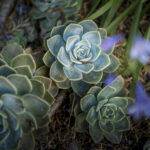 The Fascinating World of Blooming Succulents: Unveiled
The Fascinating World of Blooming Succulents: UnveiledBut what truly sets Aptenia cordifolia apart is its vibrant blooms. The dainty, star-shaped flowers come in shades of pink, red, or orange, depending on the variety. These blooms appear throughout the year, adding a burst of color to your garden. The contrast between the colorful flowers and the succulent's bright green foliage creates a visually stunning display.
Another advantage of Aptenia cordifolia is its ability to withstand drought and heat. This succulent is incredibly resilient and can survive in arid conditions. Its thick, fleshy leaves store water, allowing the plant to thrive in dry environments. If you live in an area with hot summers or limited rainfall, Aptenia cordifolia is an excellent choice for a ground cover that will stay lush and vibrant.
In addition to its beauty and resilience, Aptenia cordifolia is also relatively low-maintenance. Once established, it requires minimal watering and can tolerate neglect. This makes it an ideal choice for busy gardeners or those who want to conserve water.
When it comes to planting Aptenia cordifolia, it is essential to choose a location with well-draining soil. This succulent prefers sandy or loamy soil that doesn't retain too much moisture. Plant it in a sunny spot to encourage optimal growth and flowering. If you live in a colder climate, consider growing it in containers so that you can bring it indoors during the winter months.
Aptenia cordifolia is a fantastic choice for a ground cover succulent. Its ability to form a dense carpet-like growth, vibrant blooms, and resilience in harsh conditions make it an excellent addition to any garden. Give your landscape a touch of color and texture with this beautiful succulent that requires minimal effort to maintain.
Sempervivum tectorum, or hens and chicks, is a popular succulent ground cover that forms rosettes of leaves
If you're looking for a low-maintenance and visually appealing ground cover, look no further than Sempervivum tectorum, commonly known as hens and chicks. This succulent variety is highly regarded for its unique rosette-shaped leaves and its ability to thrive in various growing conditions.
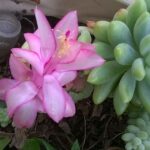 Guide to Rare Pink Succulents with Butterfly-Shaped Leaves
Guide to Rare Pink Succulents with Butterfly-Shaped LeavesThe name "hens and chicks" perfectly describes the growth habit of this succulent. The mother plant, also known as the "hen," produces numerous offsets or "chicks" around its base. These offsets can be easily separated and replanted, making it a great option for spreading across your garden.
Sempervivum tectorum is known for its resilience and adaptability. It can withstand drought conditions and is tolerant of poor soil quality, making it an ideal choice for ground covers in arid climates. Additionally, its hardy nature allows it to survive in both full sun and partial shade.
One of the standout features of hens and chicks is its ability to change colors throughout the year. The leaves can range from green to red, depending on the amount of sunlight they receive and the temperature. This natural color variation adds visual interest and makes it a versatile choice for any garden.
When it comes to maintenance, hens and chicks are incredibly easy to care for. They require minimal watering and can thrive in neglect, making them perfect for busy gardeners or those new to succulent gardening. However, it's important to ensure that the soil is well-draining to prevent root rot.
Whether you're looking to fill gaps between stepping stones, cover a large area, or create a beautiful rock garden, Sempervivum tectorum is a fantastic choice for a ground cover. Its hardiness, versatility, and low-maintenance nature make it an excellent addition to any garden.
Lampranthus spectabilis, or trailing ice plant, is a cascading succulent ground cover with bright purple flowers
Lampranthus spectabilis, also known as trailing ice plant, is a stunning succulent ground cover that adds a vibrant pop of color to any garden. With its cascading growth habit and mesmerizing bright purple flowers, this plant is a true showstopper.
The trailing ice plant is native to South Africa and thrives in warm, dry climates. It is a low-maintenance plant that requires little water once established, making it an excellent choice for xeriscapes and arid regions. Its ability to tolerate a wide range of soil conditions, from sandy to rocky, further enhances its versatility as a ground cover.
 Rare Succulent Collection: Unique Cacti & Pineapple Varieties
Rare Succulent Collection: Unique Cacti & Pineapple VarietiesWhen it comes to aesthetics, the trailing ice plant doesn't disappoint. Its fleshy, succulent leaves are triangular in shape and have a unique bluish-green hue. These leaves form a dense mat that spreads horizontally, creating a beautiful carpet-like effect. But the real star of the show is undoubtedly its stunning flowers.
The bright purple flowers of Lampranthus spectabilis are a sight to behold. They bloom profusely in the spring and summer, covering the plant with a sea of vibrant color. These eye-catching flowers not only attract pollinators like bees and butterflies but also add a sense of joy and liveliness to any garden or landscape.
To ensure the best growth and blooming performance, plant the trailing ice plant in full sun or partial shade. It prefers well-draining soil and should be watered sparingly, allowing the soil to dry out between waterings. Overwatering can lead to root rot and other issues, so it's crucial to strike a balance.
In terms of maintenance, the trailing ice plant is relatively easy to care for. Regular pruning can help keep the plant tidy and promote bushier growth. Additionally, fertilizing once or twice a year with a balanced succulent fertilizer can provide the necessary nutrients for optimal growth.
Overall, Lampranthus spectabilis, or trailing ice plant, is a fantastic choice for gardeners looking to add a burst of color to their landscape. Its cascading growth habit, attractive foliage, and vibrant purple flowers make it a standout ground cover option. Give it a try, and you'll be rewarded with a stunning display of nature's beauty.
Drosanthemum floribundum, or rosea ice plant, is a low-growing succulent with pink flowers that makes an excellent ground cover
Drosanthemum floribundum, commonly known as rosea ice plant, is a stunning low-growing succulent that is perfect for use as a ground cover. With its vibrant pink flowers and unique foliage, this succulent adds a pop of color and beauty to any landscape.
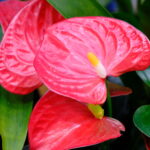 Discover the Stunning Flowering Succulents that Transform Gardens
Discover the Stunning Flowering Succulents that Transform GardensThe rosea ice plant is native to South Africa and is well-adapted to arid climates. It thrives in full sun and well-draining soil, making it an ideal choice for xeriscapes and rock gardens. This succulent is also drought-tolerant once established, making it a low-maintenance option for busy gardeners.
One of the standout features of the rosea ice plant is its flowers. The plant produces an abundance of small, daisy-like flowers in various shades of pink. When in full bloom, the flowers create a stunning carpet of color, transforming your garden into a vibrant oasis.
In addition to its attractive flowers, the rosea ice plant boasts fleshy, green leaves that form a dense mat. The leaves are glossy and cylindrical, adding an interesting texture to the landscape. This succulent spreads quickly and forms a thick ground cover that suppresses weed growth and helps retain moisture in the soil.
To ensure the best performance of your rosea ice plant, plant it in well-draining soil and provide ample sunlight. This succulent is hardy in USDA hardiness zones 9-11 and can withstand temperatures as low as 20°F (-6°C). If you live in a colder climate, consider growing the rosea ice plant in containers that can be brought indoors during the winter months.
If you're looking for a stunning succulent ground cover, Drosanthemum floribundum, or rosea ice plant, is an excellent choice. With its vibrant pink flowers, unique foliage, and low-maintenance nature, this succulent is sure to make a statement in your garden.
Echeveria elegans, or Mexican snowball, is a compact succulent that forms a dense ground cover with its rosettes of pale green leaves
Echeveria elegans, also known as Mexican snowball, is a stunning succulent that is perfect for creating a lush and vibrant ground cover. With its compact size and rosettes of pale green leaves, it adds a touch of elegance to any garden or landscape.
 Popular Indoor Succulents: Common Varieties for Your Home!
Popular Indoor Succulents: Common Varieties for Your Home!This particular succulent is native to Mexico and is a popular choice among gardeners due to its low maintenance requirements and ability to thrive in various climates. Its fleshy leaves store water, allowing it to withstand periods of drought, making it an excellent choice for areas with limited water availability.
The rosettes of Echeveria elegans grow close to the ground, forming a dense cover that prevents weeds from taking over and helps retain moisture in the soil. This makes it an ideal choice for ground covers in both small and large areas.
One of the standout features of Echeveria elegans is its ability to produce stunning pink flowers during the spring and summer months. These delicate blooms add a pop of color to the landscape and attract beneficial pollinators such as bees and butterflies.
When it comes to planting Echeveria elegans, it is important to choose a well-draining soil mix and a sunny location. This succulent thrives in full sun or partial shade, making it a versatile option for various garden settings.
To propagate Echeveria elegans, simply remove a healthy rosette from the parent plant and allow it to dry for a few days. Once the cut end has calloused over, it can be planted in well-draining soil, and new roots will start to develop within a few weeks.
Echeveria elegans is a fantastic choice for a ground cover succulent. Its compact size, low maintenance requirements, and ability to produce beautiful flowers make it a standout option for any garden or landscape. Consider adding this charming succulent to your outdoor space and enjoy the beauty it brings.
Portulaca grandiflora, or moss rose, is a colorful succulent ground cover that thrives in hot, dry conditions
 Discover the Most Popular Arctic Ice Succulent Varieties
Discover the Most Popular Arctic Ice Succulent VarietiesPortulaca grandiflora, commonly known as moss rose, is a stunning succulent ground cover that adds a pop of color to any garden. This versatile plant thrives in hot, dry conditions, making it the perfect choice for areas with limited rainfall or intense sun exposure.
The moss rose features vibrant, daisy-like flowers that come in a wide range of colors, including pink, yellow, orange, red, and white. These showy blooms not only attract pollinators like bees and butterflies but also create a visual feast for the eyes.
One of the advantages of using Portulaca grandiflora as a ground cover is its ability to form a dense mat of foliage. The succulent leaves are fleshy and cylindrical, ranging in color from green to reddish-brown. This low-growing plant spreads quickly, providing excellent coverage and suppressing the growth of weeds.
When it comes to maintenance, moss rose is a low-maintenance option. It requires minimal watering, as it is highly drought-tolerant. This makes it an ideal choice for gardeners who live in arid regions or those looking to conserve water in their landscapes.
To ensure optimal growth, plant Portulaca grandiflora in full sun and well-draining soil. This succulent ground cover is also suitable for rock gardens, slopes, or containers, adding a touch of beauty wherever it is planted.
Orostachys iwarenge, or dunce's caps, is a unique succulent ground cover that forms clumps of rosettes resembling miniature pine cones
Orostachys iwarenge: A Unique Succulent Ground Cover
Orostachys iwarenge, commonly known as dunce's caps, is a captivating succulent ground cover that adds a touch of uniqueness to any garden or landscape. This remarkable plant forms clumps of rosettes that resemble miniature pine cones, creating an eye-catching display.
Native to the mountainous regions of Asia, Orostachys iwarenge is highly adaptable and thrives in various growing conditions. Its low-growing nature makes it an excellent choice for ground cover, especially in areas where traditional grass may struggle to thrive.
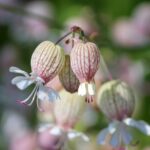 Discover Beautiful Succulents with Bell-Shaped Flowers: A Guide
Discover Beautiful Succulents with Bell-Shaped Flowers: A GuideOne of the standout features of Orostachys iwarenge is its ability to change color throughout the year. During the warmer months, the rosettes display a vibrant green hue, while in cooler temperatures, they transform into stunning shades of pink, red, or purple. This color-changing ability adds visual interest and ensures that your garden remains captivating throughout the seasons.
This succulent ground cover is also known for its resilience and ability to tolerate drought conditions. Once established, Orostachys iwarenge requires minimal watering, making it a low-maintenance option for those looking to conserve water or reduce their gardening efforts.
When it comes to planting Orostachys iwarenge, it is best to choose a well-draining soil mix to prevent waterlogging, which can cause root rot. This succulent thrives in full sun but can tolerate partial shade, making it suitable for a variety of garden settings.
Whether you're looking to create a rock garden, fill in gaps between pavers, or simply add a unique touch to your landscape, Orostachys iwarenge is an excellent choice for a succulent ground cover. Its intriguing appearance, color-changing ability, and low-maintenance nature make it a standout option for any garden enthusiast.
Sedum spurium 'Dragon's Blood' is a great choice for a ground cover succulent because of its vibrant red foliage and ability to tolerate various soil conditions
Why choose Sedum spurium 'Dragon's Blood' as a ground cover succulent?
When it comes to selecting a ground cover succulent, Sedum spurium 'Dragon's Blood' stands out for several reasons. Firstly, its vibrant red foliage adds a splash of color to any garden or landscape. The rich, deep red tones of this succulent create a visually striking contrast against the greenery of other plants.
Another advantage of Sedum spurium 'Dragon's Blood' is its ability to adapt to various soil conditions. Whether your soil is sandy, loamy, or clayey, this succulent can thrive without much fuss. It is also tolerant of drought, making it an excellent choice for arid climates or areas with less frequent rainfall.
 Thriving Succulents: Discover Fast-Growing Varieties
Thriving Succulents: Discover Fast-Growing VarietiesIn addition to its aesthetic appeal and adaptability, Sedum spurium 'Dragon's Blood' is a low-maintenance ground cover. Once established, it requires minimal care and attention. This makes it an ideal choice for gardeners who want a beautiful ground cover without the need for constant upkeep.
Furthermore, Sedum spurium 'Dragon's Blood' is a fast-growing succulent. It quickly spreads and forms a dense mat of foliage, effectively suppressing weed growth and reducing the need for additional maintenance.
How to incorporate Sedum spurium 'Dragon's Blood' into your landscape?
There are several ways to incorporate Sedum spurium 'Dragon's Blood' into your landscape design. Here are a few suggestions:
- Use it as a ground cover in rock gardens or dry landscapes. Its ability to thrive in poor soil conditions and withstand drought makes it an ideal choice for these areas.
- Plant it along pathways or in between stepping stones to create a visually appealing and low-maintenance walkway.
- Combine it with other low-growing succulents or ground covers to create a tapestry of colors and textures in your garden.
- Consider using Sedum spurium 'Dragon's Blood' as a cascading plant in hanging baskets or containers, allowing its vibrant foliage to spill over the edges.
With its striking red foliage, adaptability, low maintenance needs, and fast growth, Sedum spurium 'Dragon's Blood' is undoubtedly one of the best blooming succulents for ground covers. Whether you're looking to add color to your garden or need a low-maintenance option for a specific area, this succulent is sure to impress.
Sedum reflexum 'Angelina' is a low-growing succulent that spreads quickly, making it perfect for ground cover in sunny areas
Sedum reflexum 'Angelina' is a stunning low-growing succulent that is perfect for creating ground cover in sunny areas. With its vibrant golden-green foliage, it adds a pop of color to any garden or landscape.
This hardy succulent is known for its ability to spread quickly, forming a dense mat of foliage. It has needle-like leaves that are fleshy and succulent, giving it a unique texture and visual appeal. The leaves also have a slight tinge of orange or red during colder months, adding even more interest to its appearance.
One of the great things about Sedum reflexum 'Angelina' is its versatility. It thrives in well-draining soil and can tolerate a wide range of soil types, including rocky or sandy soil. This makes it an excellent choice for areas where other plants might struggle to grow.
Another advantage of this succulent is its ability to withstand drought conditions. Once established, Sedum reflexum 'Angelina' requires minimal watering, making it a low-maintenance ground cover option. Its ability to retain moisture in its fleshy leaves allows it to survive in dry environments.
In terms of maintenance, Sedum reflexum 'Angelina' is fairly easy to care for. It rarely requires pruning or trimming, but if desired, you can trim it back in early spring to promote denser growth. However, be careful not to over-prune, as this can inhibit its natural spreading habit.
Benefits of Sedum reflexum 'Angelina' as a Ground Cover:
- Low-growing: With a height of only a few inches, Sedum reflexum 'Angelina' creates a compact ground cover that doesn't overshadow other plants.
- Fast-spreading: This succulent has a vigorous growth habit, quickly filling in bare areas and suppressing weeds.
- Drought-tolerant: Once established, Sedum reflexum 'Angelina' can withstand prolonged periods of drought, making it an excellent choice for water-wise gardens.
- Attractive foliage: The vibrant golden-green leaves of this succulent add visual interest and create a striking contrast when planted with other plants.
- Adaptable: Sedum reflexum 'Angelina' can thrive in various soil types and is suitable for both full sun and partial shade.
Whether you're looking to cover a large area or add a splash of color to your garden, Sedum reflexum 'Angelina' is the perfect choice for a low-maintenance and visually appealing ground cover. Its adaptability and resilience make it a reliable option that will thrive in almost any garden setting.
Delosperma cooperi, also known as the ice plant, is a beautiful succulent ground cover with vibrant pink flowers that bloom in the summer
Delosperma cooperi, commonly referred to as the ice plant, is a stunning succulent that can transform any garden into a colorful oasis. This ground cover variety is known for its vibrant pink flowers that burst into bloom during the summer months. With its low-lying growth habit, Delosperma cooperi makes an excellent choice for adding a pop of color to your garden beds, borders, or even rock gardens.
One of the standout features of Delosperma cooperi is its ability to tolerate harsh conditions, making it a resilient ground cover option. This succulent is drought-tolerant and thrives in full sun, making it perfect for hot and arid climates. It is also frost-resistant, which means it can withstand colder temperatures during the winter months. This adaptability makes Delosperma cooperi an excellent choice for gardens in various regions.
In addition to its eye-catching flowers, Delosperma cooperi also boasts fleshy, succulent leaves that are green in color. These leaves create a dense mat-like growth pattern, which not only adds visual interest but also helps to suppress weed growth. This means less maintenance for you and more time to enjoy the beauty of your garden.
To ensure the health and longevity of your Delosperma cooperi ground cover, it is crucial to provide it with well-draining soil. This succulent does not tolerate wet feet, so be sure to plant it in an area with good drainage. Once established, Delosperma cooperi is relatively low-maintenance and requires minimal watering.
Whether you're looking to add a burst of color to your garden or need a hardy ground cover that can withstand tough conditions, Delosperma cooperi is an excellent choice. Its vibrant pink flowers, drought tolerance, and ability to suppress weed growth make it a standout option for any garden.
Aptenia cordifolia, commonly known as baby sun rose, is a fast-growing succulent that forms a dense ground cover and produces small pink or purple flowers
1. Aptenia cordifolia (Baby Sun Rose)
Aptenia cordifolia, commonly known as baby sun rose, is a fast-growing succulent that forms a dense ground cover and produces small pink or purple flowers. This versatile succulent is native to South Africa and thrives in warm, sunny locations.
The baby sun rose is an excellent choice for ground covers due to its rapid spreading habits. Its trailing stems can quickly fill in bare areas, creating a lush carpet-like effect. The vibrant flowers, which bloom from spring to fall, add a pop of color to your garden.
This succulent is also drought-tolerant, making it a low-maintenance option for those with busy schedules or limited access to water. Its ability to withstand dry conditions and its resilience against pests and diseases make it an ideal choice for beginners.
How to Grow Aptenia cordifolia
To grow Aptenia cordifolia as a ground cover, follow these simple steps:
- Choose a Sunny Spot: Baby sun rose thrives in full sun, so select a location that receives at least six hours of direct sunlight daily.
- Prepare the Soil: Ensure the soil is well-draining and amend it with organic matter if necessary. Baby sun rose can tolerate a variety of soil types, including sandy or rocky soils.
- Propagation: Aptenia cordifolia can be propagated from stem cuttings or by dividing mature plants. Once you have obtained the cuttings, allow them to dry for a day or two before planting.
- Planting: Dig small holes in the prepared soil and place the cuttings or divided plants in them. Space the plants about 12-18 inches apart to allow for proper spreading.
- Watering: Water the newly planted baby sun rose thoroughly and then reduce the frequency of watering. This succulent prefers dry conditions and can handle short periods of drought.
- Maintenance: Trim the plant occasionally to maintain its shape and prevent it from becoming too invasive. Fertilization is not necessary, but a light application of a balanced fertilizer in spring can encourage vigorous growth.
By following these steps, you can enjoy the beauty and benefits of Aptenia cordifolia as a ground cover in your garden. Its ability to spread quickly, tolerate dry conditions, and produce charming flowers make it a top choice for any succulent enthusiast.
Sempervivum tectorum, or hens and chicks, is a popular succulent ground cover that forms rosettes of leaves and can tolerate harsh conditions
Sempervivum tectorum, also known as hens and chicks, is a versatile and popular succulent ground cover that is adored by gardeners and landscapers alike. This resilient plant is well-known for its ability to form delightful rosettes of leaves, adding a touch of elegance to any garden or landscape.
One of the remarkable features of Sempervivum tectorum is its ability to thrive in harsh conditions. This succulent is extremely drought-tolerant and can adapt to a wide range of climates, making it an excellent choice for areas with low rainfall or limited watering capabilities.
Furthermore, hens and chicks are exceptional at spreading and covering the ground. As the plant matures, it produces numerous offsets, or "chicks," which cluster around the main rosette. These offsets can be easily detached and replanted, allowing the succulent to steadily expand its coverage and create a stunning carpet-like effect.
Not only does Sempervivum tectorum provide excellent ground coverage, but it also offers a visually appealing display. The leaves of this succulent come in a variety of colors, ranging from vibrant greens to deep purples and even stunning reds. This diversity in leaf colors adds a captivating charm to any garden or landscaping project.
In addition to its aesthetic appeal, hens and chicks are known for their low-maintenance nature. Once established, they require minimal care and attention. These succulents are highly adaptable and can thrive in both full sun and partial shade, making them suitable for various areas in your garden.
To ensure the optimal growth of Sempervivum tectorum, it is recommended to plant them in well-draining soil. Their shallow root system is susceptible to rotting if exposed to excessive moisture for prolonged periods. Therefore, a well-draining soil mix that allows excess water to escape is crucial for the health and longevity of hens and chicks.
Sempervivum tectorum, or hens and chicks, is a standout succulent ground cover due to its ability to withstand harsh conditions, its spreading nature, and its visually appealing rosettes of leaves. Whether you're looking to add a touch of elegance to your garden or need a resilient ground cover for challenging areas, this versatile succulent is an excellent choice.
Lampranthus spectabilis, or trailing ice plant, is a cascading succulent ground cover with bright purple flowers that blooms in the spring
If you're looking for a stunning ground cover that adds a pop of color to your garden, look no further than Lampranthus spectabilis. This gorgeous succulent is known for its cascading growth habit and vibrant purple flowers that bloom in the spring. Not only does it provide a beautiful carpet of color, but it also requires minimal maintenance, making it a favorite among gardeners.
The trailing ice plant is a versatile ground cover that thrives in various climates and soil conditions. It is particularly well-suited for coastal gardens, as it can tolerate salt spray and sandy soils. With its ability to withstand drought and heat, it is also an excellent choice for arid regions.
One of the standout features of Lampranthus spectabilis is its ability to attract pollinators. Bees, butterflies, and hummingbirds are drawn to its vibrant purple flowers, making it a valuable addition to any pollinator garden. Not only will you be treating your eyes to a sea of purple, but you'll also be supporting local wildlife.
When it comes to care, the trailing ice plant is relatively low-maintenance. It prefers full sun to partial shade and requires well-draining soil. Once established, it is very drought-tolerant and only needs occasional watering. However, in extremely dry conditions, providing some supplemental water can help promote healthier growth.
To keep your Lampranthus spectabilis looking its best, it's recommended to prune it back after flowering. This will help maintain its shape and encourage bushier growth. Additionally, removing any dead or damaged foliage will keep the plant healthy and attractive.
Whether you're looking to add a splash of color to your garden or need a hardy ground cover that can withstand challenging conditions, Lampranthus spectabilis is an excellent choice. Its stunning purple flowers, low maintenance requirements, and ability to attract pollinators make it a standout option for any landscape.
Drosanthemum floribundum, or rosea ice plant, is a low-growing succulent with pink flowers that makes an excellent ground cover for dry, sunny areas
Drosanthemum floribundum, or rosea ice plant
The Drosanthemum floribundum, commonly known as rosea ice plant, is a stunning low-growing succulent that is perfect for adding vibrant color to dry and sunny areas. With its beautiful pink flowers, this plant not only serves as a ground cover but also adds a touch of elegance to any garden or landscape.
One of the major advantages of Drosanthemum floribundum is its ability to thrive in harsh conditions. It is highly drought-tolerant, making it an ideal choice for regions with limited water availability. This succulent has evolved to store water in its leaves, allowing it to withstand extended periods of dryness without compromising its beauty.
The rosea ice plant forms a dense mat of fleshy, succulent foliage that spreads effortlessly, providing excellent coverage for bare ground. It quickly fills in empty spaces, preventing weed growth and erosion. Its low-growing habit also makes it an excellent choice for creating cascading effects over walls or rockeries.
When in bloom, the Drosanthemum floribundum displays a mesmerizing carpet of vibrant pink flowers. These flowers open during the day and close at night, creating a dynamic display that changes throughout the day. The contrast between the colorful blooms and the green foliage is truly eye-catching and adds a unique charm to any landscape.
This succulent is relatively easy to care for, requiring minimal maintenance once established. It prefers well-draining soil and thrives in full sun. Regular watering during the establishment phase is essential, but once established, it can tolerate periods of drought without any issues.
If you are looking for a beautiful and hardy ground cover that can thrive in dry and sunny areas, Drosanthemum floribundum, or rosea ice plant, is a fantastic choice. Its stunning pink flowers, low-growing habit, and ability to withstand harsh conditions make it a perfect addition to any garden or landscape.
Echeveria elegans, or Mexican snowball, is a compact succulent that forms a dense ground cover with its rosettes of pale green leaves and can tolerate some shade
Echeveria elegans
Echeveria elegans, also known as Mexican snowball, is a stunning succulent that is perfect for creating a lush ground cover in your garden. With its unique rosettes of pale green leaves, this compact succulent adds a touch of elegance to any landscape. One of the best things about Echeveria elegans is its ability to tolerate some shade, making it a versatile choice for various areas of your outdoor space.
When planting Echeveria elegans as a ground cover, make sure to give each plant enough space to spread and grow. These succulents can form a dense mat of foliage, creating a beautiful carpet-like effect. It is recommended to space them approximately 6 to 8 inches apart to allow for proper growth and airflow.
Another great characteristic of Echeveria elegans is its ability to thrive in various climates. Whether you live in a hot and dry region or a more temperate area, this succulent can adapt and flourish. However, it is important to ensure well-draining soil and avoid overwatering, as succulents are susceptible to root rot.
In addition to its aesthetic appeal, Echeveria elegans is also a low-maintenance plant. Once established, it requires minimal care, making it an excellent choice for busy gardeners or those new to succulent gardening. Regular watering during the growing season and occasional fertilization will keep this ground cover looking its best.
Whether you are looking to cover a large area or simply add some visual interest to your garden, Echeveria elegans is a top-notch choice. Its compact size, attractive foliage, and ability to tolerate shade make it a versatile and eye-catching ground cover. Give your outdoor space a touch of elegance with this beautiful succulent.
Portulaca grandiflora, or moss rose, is a colorful succulent ground cover that thrives in hot, dry conditions and produces vibrant flowers in various colors
If you're looking for a stunning ground cover that can withstand the heat and drought, look no further than Portulaca grandiflora, commonly known as moss rose. This succulent plant is a true gem in the garden, with its vibrant blooms and low-maintenance nature.
One of the standout features of Portulaca grandiflora is its ability to thrive in hot, dry conditions. This makes it an excellent choice for those who live in arid regions or simply want a plant that can withstand the scorching summer temperatures.
But it's not just its resilience that makes Portulaca grandiflora a popular choice for ground covers. It's the stunning array of colors that truly sets it apart. From vibrant pinks and oranges to soft yellows and whites, the flowers of this succulent are sure to catch the eye and add a pop of color to any garden.
Not only are the flowers of Portulaca grandiflora visually appealing, but they also attract pollinators such as bees and butterflies. So, by planting this ground cover, you'll not only be adding beauty to your garden but also supporting the local ecosystem.
Benefits of Portulaca grandiflora as a ground cover:
- Drought-tolerant: This succulent can survive with minimal water, making it ideal for water-wise gardening.
- Low-maintenance: Once established, Portulaca grandiflora requires little attention, making it a great choice for busy gardeners.
- Colorful blooms: The vibrant flowers of this ground cover will add a splash of color to any garden.
- Attracts pollinators: Bees and butterflies are drawn to the nectar-rich flowers, supporting the local ecosystem.
When it comes to planting Portulaca grandiflora, it's best to choose a location that receives full sun. This plant thrives in well-drained soil, so make sure to provide it with the proper growing conditions. Once established, it will quickly spread, creating a beautiful carpet of blooms.
So, if you're looking for a ground cover that can withstand the heat, requires minimal maintenance, and adds a burst of color to your garden, look no further than Portulaca grandiflora. Give it a try, and you won't be disappointed!
Orostachys iwarenge, or dunce's caps, is a unique succulent ground cover that forms clumps of rosettes resembling miniature pine cones and is drought-tolerant
Dunce's Caps - Orostachys iwarenge
Orostachys iwarenge, commonly known as dunce's caps, is a fascinating succulent ground cover that is sure to add a touch of uniqueness to your garden. This extraordinary plant forms clumps of rosettes that bear a striking resemblance to miniature pine cones. With its distinctive appearance and drought-tolerant nature, Orostachys iwarenge is an excellent choice for those seeking an eye-catching ground cover.
One of the standout features of dunce's caps is its ability to thrive in various growing conditions. Whether you have a sunny spot or a partially shaded area, this succulent can adapt and flourish. It is also well-suited for rock gardens, container plantings, and even as a border plant.
When it comes to maintenance, Orostachys iwarenge requires minimal care, making it an ideal choice for busy gardeners. This hardy succulent is drought-tolerant and can withstand dry spells, making it a perfect option for regions with limited rainfall. However, it's essential to provide well-draining soil to prevent waterlogged roots.
The leaves of dunce's caps are fleshy and thick, which helps them retain moisture, allowing the plant to survive in arid conditions. The rosettes grow close together, forming a dense mat that acts as an effective ground cover, reducing weed growth and erosion.
In terms of appearance, the rosettes of Orostachys iwarenge are a beautiful shade of blue-green, adding a cool and soothing touch to your landscape. During the summer months, the plant may produce flower spikes with clusters of tiny white or pale pink flowers, further enhancing its visual appeal.
To ensure the best growth and health of your dunce's caps, it's advisable to provide them with well-draining soil, ample sunlight, and occasional watering. However, be cautious not to overwater, as this can lead to root rot.
Orostachys iwarenge, or dunce's caps, is an exceptional succulent ground cover that boasts unique rosettes resembling miniature pine cones. With its drought-tolerant nature, low maintenance requirements, and eye-catching appearance, this plant is an excellent addition to any garden or landscape.
Frequently Asked Questions
1. What are blooming succulents?
Blooming succulents are a type of succulent plant that produces colorful flowers during their blooming season.
2. Can blooming succulents be used as ground covers?
Yes, many blooming succulents are suitable for use as ground covers, as they have low-growing and spreading habits.
3. Which blooming succulents are the best for ground covers?
Some popular blooming succulents for ground covers include Sedum spurium, Delosperma cooperi, Drosanthemum floribundum, and Aptenia cordifolia.
4. What are the benefits of using blooming succulents as ground covers?
Blooming succulents as ground covers not only add beauty to your landscape, but they also help to control erosion, suppress weed growth, and require less water and maintenance compared to traditional ground covers.
If you want to read more articles similar to Discover the Best Blooming Succulents for Ground Covers, you can visit the Varieties and Colors category.


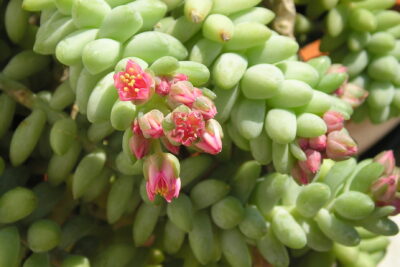



You Must Read